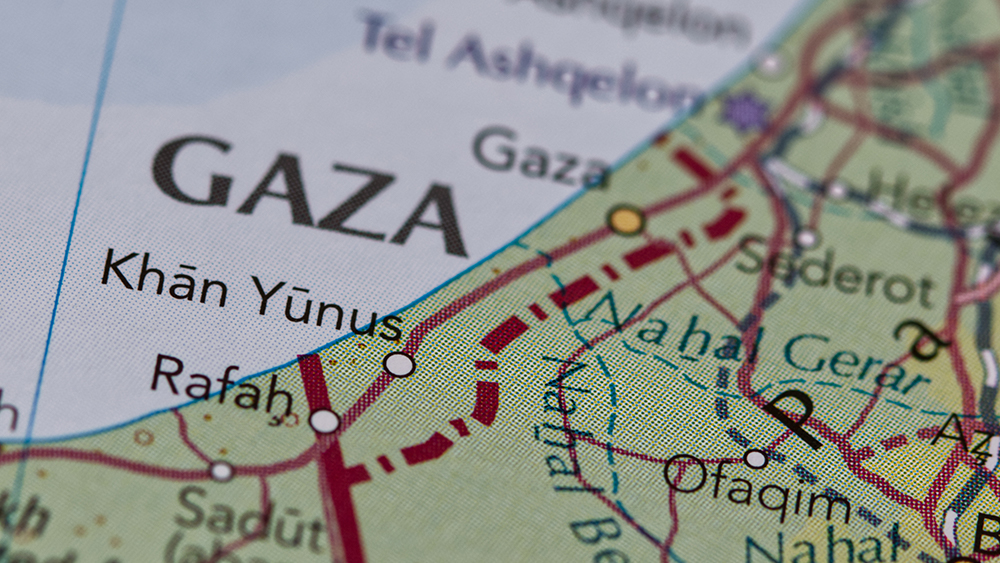- On May 16, 2024, Israel initiated Operation Gideon’s Chariots, marking a new phase in its military operations in Gaza.
- The Integrated Food Security Phase Classification warned that 20 percent of Palestinians in Gaza face starvation, with the UN estimating up to 14,000 Palestinian babies could die due to the intensifying siege.
- The GHF, a joint Israeli-U.S. initiative, is seen as a «fig leaf» for Israel’s violence and displacement of Palestinians. The foundation’s aid distribution, secured by Israeli military and private contractors, quickly led to chaos and violence, resulting in casualties among Palestinians.
- The GHF’s new plan involves providing aid to pre-screened individuals via text messages and facial recognition, amid claims by the U.S. and Israel that this prevents Hamas from stealing aid. However, this approach is viewed as legitimizing genocidal violence and is part of a broader pattern of «humanitarianizing» genocide.
- The GHF’s operations highlight a growing divide between traditional humanitarian principles and militarized approaches. The crisis underscores the need for a critical reevaluation of the international humanitarian sector, which has been complicit in the actions of dominant powers and recognizes the GHF as a strategic tool in Israel’s ongoing campaign to control and recolonize Gaza.
On May 16, 2024, Israel launched Operation Gideon’s Chariots, signaling a new phase in its military campaign in Gaza.
Just a week earlier, the Integrated Food Security Phase Classification had warned that one in five Palestinians in Gaza was facing starvation, with the United Nations estimating that up to 14,000 Palestinian babies could die under the intensifying siege.
The Gaza Humanitarian Foundation (GHF), a joint Israeli-U.S. initiative marketed as a humanitarian effort, has been criticized as a «fig leaf» for Israel’s ongoing violence and displacement of Palestinians. The foundation’s operations began with the distribution of aid from hubs secured by the Israeli military and foreign private contractors.
However, the first day of operations quickly devolved into chaos, with Israeli forces opening fire on a crowd of desperate Palestinians, resulting in at least one death and 48 injuries.
The GHF’s plan involves providing limited food aid to Palestinians on the condition that they accept mass displacement. Tom Fletcher, the UN’s under-secretary general for humanitarian affairs, described this as a «fig leaf for further violence and displacement.» The initiative echoes historical practices of concentration camps and the forced relocation of indigenous populations.
The use of internment zones and forced displacement is not new to Israel’s military strategy. Following the failure of «humanitarian bubbles» in January 2024, Israel began outsourcing aid delivery to private security contractors. This shift came after the «flour massacre» of Feb. 29, 2024, when Israeli soldiers shot at Palestinians gathering flour, killing at least 112 people and injuring around 760.
In response, the U.S. began air-dropping food, but these efforts were largely ineffective and, in one instance, resulted in the deaths of five Palestinians when a pallet of aid failed to deploy properly. The construction of a temporary floating pier off the coast of Gaza, intended to facilitate aid delivery, was also met with skepticism, particularly after images surfaced showing Israeli special forces operating near the pier during a mission to retrieve prisoners held by Hamas.
The GHF is now proposing a new aid distribution plan that involves providing essential supplies to pre-screened individuals. Recipients will receive text messages informing them when and where to collect their aid packages, but only after identity verification via facial recognition software. (Related: Israel proposes plan to screen Gaza aid recipients using facial recognition technology.)
The U.S. and Israel claim these measures are necessary to prevent Hamas from stealing aid, though they have provided little evidence to support this claim.
Legitimizing genocidal violence
The GHF’s operations are part of a broader pattern of «humanitarianizing» genocide, a concept that overlaps with «humanitarian camouflage» and «humanitarian violence.» These terms describe how Israel manipulates international humanitarian law to legitimize its military actions. The appropriation of humanitarian practices, such as aid provision and refugee resettlement, is used to enact a scorched-earth policy of destruction.
International aid organizations have so far refused to cooperate with the GHF, highlighting the growing divide between traditional humanitarian principles and the militarized approach of the GHF. The ongoing crisis in Gaza underscores the need for a critical reevaluation of the international humanitarian sector, which has often been complicit in the actions of dominant powers.
The GHF represents a new chapter in an old story of colonial violence and displacement. As the international community grapples with the implications of this latest initiative, it is crucial to recognize the GHF for what it is: a strategic tool in Israel’s ongoing campaign to control and recolonize Gaza.
Watch the video below that talks about a U.S.-backed aid group starting operations in Gaza.
This video is from the TrendingNews channel on Brighteon.com.
More related stories:
Israel’s empty promises: No aid reaches starving Gazans despite claims of deliveries.
UK takes bold stand against Israel’s Gaza atrocities, suspends trade talks and sanctions settlers.
Israel’s U.S.-backed Gaza aid plan sparks global backlash.
Sources include:
